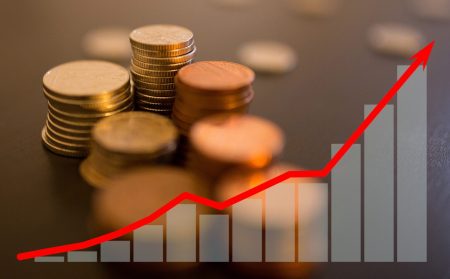Running a business is expensive. Even if you’re running a sole proprietorship (just you), there are startup fees and equipment you need to run your business. If you get into physical space and hiring employees, then running your business gets extremely expensive.
Canada’s tax laws give companies access to something called a “capital cost allowance” (CCA). This is an income tax deduction specifically for businesses. We’ll get into what exactly capital cost is as well as provide some specifics about what can be deducted with the capital cost allowance.
What is Capital Cost?
Workspaces and employees are certainly costly, but you also want to make sure your company runs on the latest technology, uses new equipment, and runs as effectively as possible.
Capital cost is the money a business pays for physical equipment or real estate to conduct business. This includes the legal, accounting, inspection, and architectural fees necessary to purchase these items.
Capital cost can also be expenses needed for upgrades to any company property that hasn’t already been claimed.
Service Canada has a detailed list of capital cost items separated into 21 different classes. These classes are grouped by the type of equipment, and each class has a specific rate of depreciation allowed as part of a company’s CCA.
Buildings fall into several different classes, and they are classified by the material the building is made of and the year it was bought. The list also classifies things like computers, work vehicles, manufacturing equipment, and furniture.
What Is the Capital Cost Allowance?
When you purchase those new computers your employees so desire, you must, unfortunately, pay retail for them. In seemingly no time at all, those computers decrease in value due to use and advances in available technology – this is called depreciation.
One of the costliest items on any company’s balance sheet is depreciation. Good corporate accounting will lead to your business being able to capture several benefits when tax time comes.
Sometimes, gaining an advantage in your industry might be attributable not only to the ability to give customers competitive products at good prices but also to the ability to minimize the cost of doing business.
Enter the Capital Cost Allowance. CCA is the depreciation on capital costs that is allowed to be deducted from your company’s income tax bill. After going through the process of calculating how much of each item can be deducted, the total CCA is subtracted from your company’s total taxable income.
Your accounting department should have a running list of items to keep track of the CCA. However, there are some items that are not included in the list of capital cost items. Notably mentioned is the fact that land cannot be counted as a CCA. Also, building purchase without the intention of producing income cannot be counted as CCA.
How is Capital Cost Allowance Calculated?
CCA is calculated for each item that qualifies for the deduction. These numbers are totaled up to obtain the full CCA deduction.
In order to calculate the CCA for each item, the following terms need to be understood.
– Available for use – This is effectively the start date when you can begin claiming the property as a capital cost. It depends on the first date on which the property starts to earn income or when it begins producing work for your company. Buildings become available for use when 90% of the building or space is being used for your business.
– Capital cost – We’ve touched on this in the previous section. Check the link included for a full list of eligible capital cost items and their rates.
– Depreciable property – This refers to property that wears out as it is used. This could be items such as cars, trucks, farm equipment, fishing boats, etc. This could also refer to rented property. Obviously, you cannot claim the purchase price, but you can claim the cost of renting the property as long as it was used to produce income.
– Fair market value (FMV) – This is the most amount of money you could get for an item if it were sold in the open market. The definition on the Service Canada website says it is a transaction conducted “from an informed and willing buyer and an informed and willing seller who are dealing at arm’s length with each other.” The “at arm’s length” part is actually also defined. This is a term for parties acting in their own interests for commercial purposes. In other words, it clarifies the deal isn’t between two friends.
– Proceeds of disposition – this is the amount of money you received or would have received in the event of loss of a property. This applies to situations of damage, destruction, or theft.
These terms should be applied to each depreciable item so that an accurate accounting can be made. After the first year, an item’s value continues to drop, so the previous year’s value can be carried over to the next year, and that figure is then used to calculate the CCA. This process continues over the life of the item.
Most businesses know about Form T2125, which is the business income tax form. On page 5 is the CCA calculation table, which is not big enough for most businesses with capital costs. While you can use the Service Canada Website to help you calculate your CCA, it is highly recommended to use professional business tax software. Many of these will carry all of the data you entered for the previous year and help calculate the CCA for those items at the depreciated value.
Conclusion
If you’re running a profitable business, it’s always recommended to look closely at all of the benefits available to you at tax time. Because depreciation can be a huge weight on a company’s profit margins, taking the time to go through the CCA calculations can help reduce your company’s income tax.
Not only that but it can also help your company understand where there are opportunities for improvement when it comes time to upgrade your company’s equipment and improve output.












